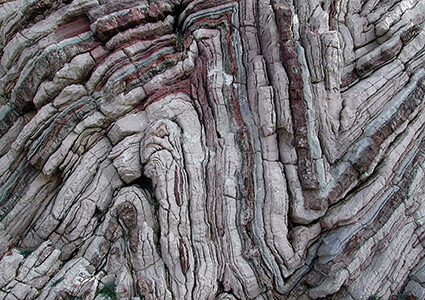6 | Summary
Summary
- A rock is a naturally occurring solid object composed of one or more minerals.
- Rocks are grouped into three main categories based on how they are formed:
- Igneous rocks are formed when magma or lava cools and solidifies.
- They are generally hard and strong as they are composed of interlocking crystals.
- Sedimentary rocks are formed by the compaction and cementation of sediments or the precipitation of dissolved minerals.
- They are generally soft and easily broken apart as they are composed of non-interlocking grains.
- Metamorphic rocks are formed when existing rocks undergo a transformation under high pressure and/or high temperature.
- They are generally very hard and strong as they are composed of compressed, interlocking crystals.
- Rocks can also be classified based on their physical structure or their chemical composition.
- A mineral is a naturally occurring solid substance with a defined chemical composition and crystalline structure.
- Minerals may can be elements or compounds. Minerals that are compounds are named differently to the chemical compounds they are composed of.
- The rock cycle is a series of geological processes that represent transitions between igneous, sedimentary and metamorphic rocks.
- The rock cycle includes processes that occur on Earth’s surface and processes that occur beneath Earth’s surface.
- Most of the processes that are part of the rock cycle take place over very long periods of time.
- The key processes involved in the rock cycle are:
- Melting – the formation of magma.
- Crystallisation – the formation of igneous rock.
- Weathering and erosion – the formation of sediments.
- Deposition and lithification – the formation of sedimentary rock.
- Metamorphism – the formation of metamorphic rock.
- Rocks have been used by humans for thousands of years, for their physical properties and for the minerals that they contain.
- The study of rock strata reveals information about past geological events, such as volcanoes, earthquakes and other tectonic activity.
- The study of fossils found in rocks reveals information the evolution of life.
- The geological time scale is a timeline that divides Earth history into intervals that correspond with major geological and biological events.

(Image: Dieter Mueller, Wikimedia Commons)

